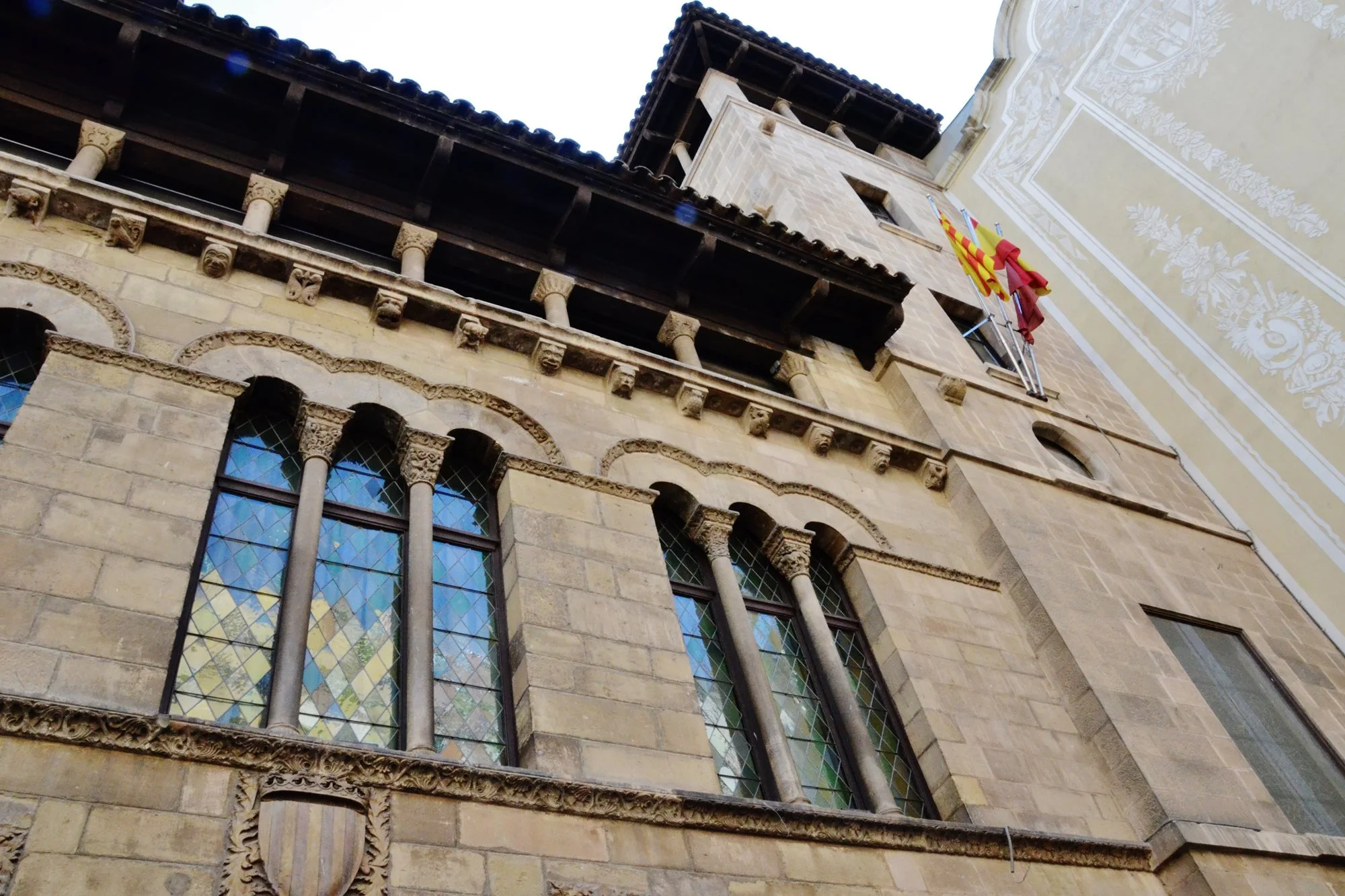
Cookie settings
We use our own and third-party cookies in order to offer our services, display videos, obtain statistics and offer personalized advertising.
For more information, please read our cookies policy.

The Paeria Palace, the most representative work of Romanesque civil architecture in Lleida, is also one of the most emblematic monumental constructions in Catalonia.
At first sight, different interventions can be seen. The façade that overlooks the river Segre corresponds to neoclassical style architecture and in 1929, they chose to restore it in a neo-medieval style. The result is a perfect well-balanced building.
Built at the beginning of the 13th century, it is erected on "strata" of history that the technicians from Lleida City Council and the University discovered after consecutive excavations.
In the 14th century - more precisely in 1383 - the Sanaüja family, owners and precursors of the current construction, handed over the building to the city so that it could become the municipal government
headquarter.
Nowadays, La Paeria, known by Lleida inhabitants as the house of the paer en cap (mayor), is home to numerous treasures that reflect the identity of the city.
The word paer comes from the Latin word patiarii, which means man of peace. The nickname was adopted by the mayors of the city after King Jaime I had granted privileges to Lleida's former consuls.
The altarpiece of Virgin of Paers
The 15th-century gothic altarpiece (1451-1454) that decorates the noble room - where civil weddings are celebrated - originally presided over the altar of the Paeria chapel. The central figure of the work is the Virgin flanked by the archangels Gabriel and Michael. The Virgin, surrounded by the four paers, symbolizes the protection of the government of the city.
La Morra
In 1486, La Paeria basements were reformed to create a prison with separated rooms for men and women. The room destined for guilty people condemned to death is known as La Morra. The ashlars of the prison walls are covered in numerous pieces of graffiti that date from the 16th and the 17th centuries. This graffiti represents the crucifixion and codes as a sign of religious devotion and lack of liberty.
The City Archives and the "Carta Pobla"
There is a gorgeous baroque wooden wardrobe that is known as the Wardrobe of Privileges. Another treasure of the archive is the Llibre dels usatges, which dates back to the 14th century. However, the most important historical document that is catalogued in the city archives is, without a doubt, the Carta Pobla, the first constitution of the inhabitants of the lands of Lleida, dated 1150.
Built: XIII-XX Centuries
Style: Gothic, Neo-medieval, Romanesque
Category: Civil
Type: Palace
Address and telephone
Opening times
If you see any mistakes or want to add anything to this information, please contact us.

Book your hotel